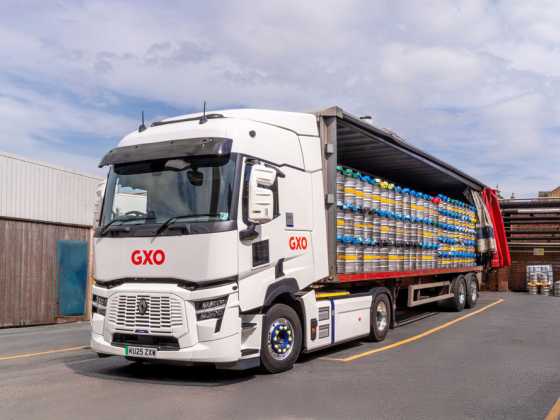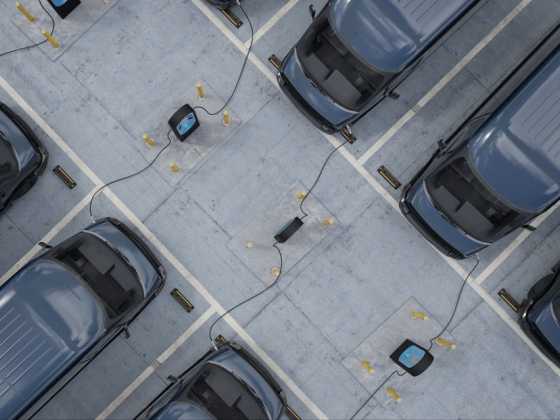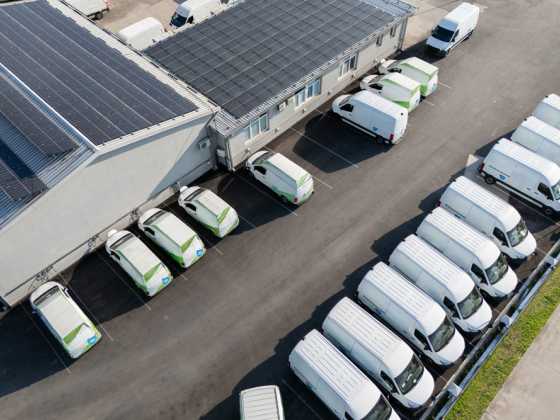Explaining the hydrogen hype
2015 has been mooted as the year that the hydrogen era will kick off. But as we are approaching the end of 2013, how close are we to driving around in hydrogen powered cars, asks Angela Pisanu
 Some 15 years ago, there was much talk about hydrogen becoming a widely adopted fuel, but it never came to fruition. Why was that? It has been likened to the ‘chicken and the egg’ scenario; the manufacturers didn’t make the cars because there was nowhere to refuel them. And the hydrogen firms didn’t install the refuelling infrastructure because there were no cars to refuel. Plus the technology wasn’t quite there, as the degradation of the fuel cells was too great. But if you talk to the stakeholders involved now – the car makers, the refuelling infrastructure providers, and indeed the government – it does seem like they are on the same page.
Some 15 years ago, there was much talk about hydrogen becoming a widely adopted fuel, but it never came to fruition. Why was that? It has been likened to the ‘chicken and the egg’ scenario; the manufacturers didn’t make the cars because there was nowhere to refuel them. And the hydrogen firms didn’t install the refuelling infrastructure because there were no cars to refuel. Plus the technology wasn’t quite there, as the degradation of the fuel cells was too great. But if you talk to the stakeholders involved now – the car makers, the refuelling infrastructure providers, and indeed the government – it does seem like they are on the same page.
The cars
Let’s start with the cars. Hyundai has taken a bold step, committing to be the first to put become hydrogen-powered cars into series production. They will build an initial 1,000 Hyundai ix35 Fuel Cell models by 2015, building up to 10,000 units, in line with customer demand.
Honda’s fuel cell vehicle, the FCX and its successor, the FCX Clarity, have been leased in America and Japan since 2002, enabling Honda to gain valuable data concerning real-world use of fuel cell electric vehicles. Honda plans to launch the successor of FCX Clarity in Japan and the United States in 2015, and then in Europe.
Meanwhile, General Motors (GM) has been researching hydrogen fuel cell vehicles in its Project Driveway programme since 2007, which has accumulated nearly 3 million miles of real-world driving in a fleet of 119 hydrogen-powered vehicles.
What’s more, BMW Group and Toyota have announced they will be sharing technologies to jointly develop fuel‑cell vehicle systems by 2020.
Crucially, hydrogen fuel cell vehicles have been designed to offer the same driving experience as an internal combustion engine, so no radical change of driver behaviour is needed, as, say, for a pure electric car. In the case of the Hyundai ix35, that means a maximum speed of 100mph, 0-62mph in 12.5 seconds and a range of almost 370 miles from each tank. And it can be refiled in two to three minutes at the pumps, comparable to refuelling with diesel or petrol. Therefore, hydrogen fuel cell cars won’t have the same limitations as battery electric vehicles, where drivers have to consider the range of the battery and how long it will take to recharge.
Interestingly, however, a hydrogen fuel cell vehicle is essentially an electric vehicle because it is driven by electricity. But rather than having to recharge your vehicle, you refuel it with hydrogen, which generates electricity on-board (via a chemical reaction in the fuel cell) to power the motor.
Finding the power
So we have the cars, but where to refuel? There are various hydrogen refuelling stations cropping up around the UK, Europe, and indeed, across the globe. There are currently two hydrogen refuelling stations in London, built and supplied by Air Products. There is a publicly accessible one at Heathrow Airport, which was used to refuel the five fuel cell black cabs during the Olympic games. The other, which is not open to the public, is in Lea Interchange, Stratford, and powers the fleet of hydrogen fuel cell buses that operate the scenic RV1 route in London. Now, as part of the London Hydrogen Network Expansion, there are plans for further stations in and around the capital; one in East London, one in central London and one at the Millbrook Proving Ground in Bedford.
Swindon has an open access hydrogen vehicle refuelling station in Honda’s manufacturing facility, which was built and operated by industrial gases company BOC. There are other refuelling stations dotted around the UK as part of large-scale demonstration projects.
Moving forwards, it is expected there will many as 65 hydrogen refuelling stations in the UK by 2015, according to low-carbon energy consultancy firm Element Energy. Most will be in major cities, but there will be refuelling stations along major trunk routes linking those cities. It is forecast that there will be 300 stations by 2025 and 1,150 by 2030. Crucially, the UK’s refuelling stations will have 700 bar fuelling systems, which manufacturers have confirmed is the standard that hydrogen vehicles will require.
Government support
The UK government is supporting the role out of hydrogen as part of its pledge to decarbonise the transport sector. The UKH2Mobility programme brings together three government departments and industrial participants from the utility, gas, infrastructure and global car manufacturing sectors to evaluate the potential for hydrogen in the UK. In its first report released in April 2013, it predicts that 1.6 million hydrogen powered vehicles could be on UK roads by 2030.
Business Minister Michael Fallon said: “The transition to ultra-low emission vehicles has already begun. It has the potential to create really significant new economic opportunities for the UK, to diversify national energy supply and to decarbonise road transport. The findings released [in the report] demonstrate that hydrogen fuel cell electric vehicles can make a significant contribution to this.
“Successful commercialisation of the technology will require Government to work in true partnership with industry. Our international rivals are looking to steal a march in this area and so UKH2Mobility recognises the importance of prompt action to ensure the potential benefits are realised by businesses and consumers in the UK.”
Projects around the UK
There are numerous large-scale demonstrator projects and research programmes into hydrogen fuel cell vehicles taking place around the UK. The Isle of Wight, known as ‘Ecoisland’, has gained Technology Strategy Board funding to build a hydrogen energy production, storage and vehicle refuelling system and integrate it into the power system on the island.
Scotland has the largest fleet of hydrogen buses in any European city, with six hydrogen fuel cell buses in Aberdeen as part of the ‘HyTransit’ project and four under the High V.LO-City project.
Wales is investing a significant amount of money into research and development of hydrogen, lead by the University of Glamorgan, and Birmingham will get a hydrogen refuelling station as part of the SWARM project, to support a fleet of more than 90 small, specifically designed fuel cell vehicles operating in local clusters.
And going back to the capital, five Hyundai ix35 Fuel Cell models and a number of Revolve hydrogen powered vans will play a role in the London Hydrogen Network Expansion project. They will be leased to key public and private fleet users in the capital and the infrastructure will be put in place to support their operation.
How 'green' is hydrogen?
The question now is, how environmentally‑friendly is hydrogen? At the tail pipe, it emits no harmful emissions, only water vapour. But what about the process to create hydrogen?
Hydrogen is not found on its own, but exists as a component within many different materials, like water (H2O) for instance. It therefore must be extracted, and this process requires energy.
Currently, the main method of generating hydrogen is by steam reforming of natural gas but it does result in greenhouse gas emissions. Hydrogen can also be produced by electrolysis of water.
‘Brown’ hydrogen is currently the most common hydrogen that’s commercially available, and is generated using non‑renewable sources of energy during the separation process. In addition, supplies are usually delivered to the refuelling station, therefore carbon emissions are released during both the distribution and separation processes.
But, importantly, hydrogen can be made ‘greener’ if renewable energy sources are used during the extraction process. Electrolysis is one such way to make hydrogen production greener, and the Phase 1 report from UKH2Mobility confirms it is to play a key role in hydrogen roadmap for the UK. The electricity needed for electrolysis can be sourced from a renewable source such as wind or solar. It can also be made on-site, meaning there are no emissions released during the delivery. This makes it truly carbon free. Clean fuel company ITM Power has created a refuelling platform which generates hydrogen on-site. What’s more, it uses surplus renewable electricity that would otherwise be lost from the grid.
Safety
Refuelling a fuel cell car is done under high pressure through a secure locked seal to ensure no hydrogen escapes. If it does, being lighter than air, the hydrogen will float away and disperse. Therefore it is crucial that refuelling is always conducted either in the open air or in a well-ventilated space.
To quote Hyundai: “Like all fuels, hydrogen must be treated with respect but when used with proper safety controls it is as safe as petrol or diesel.”
So will it take off?
The technology works, we have a promise of fuel cell cars and hydrogen refuelling stations, and there’s government support, so the future looks promising. But it will no doubt boil down to price and as yet, Hyundai has not announced the cost of its cars. The company admits that at first they will be expensive as the technology is new, but that by 2030, with 300,000 predicted for UK roads, the cost will come down. Then fuel‑cell vehicles will be at least cost-competitive with conventional vehicles, they say.
Element Energy’s Ben Madden sums up the future barriers: “While there are further improvements to lifetime cycles and efficiency to come, as well as the cost reductions that come with large volumes and cost reduction, fundamentally the technology as far as the cars are concerned is there.
“The next challenge is the infrastructure, the refuelling network, because without that you won’t get the volume sales of the cars.
“My personal feeling is that fuel cell vehicles stand a much better chance of success than Battery EVs as there are no range-limitation or refuelling time issues. The only issue is whether it’s possible to roll out the refuelling network sufficiently quickly to keep up with consumer expectations.”
So will 2015 be the start of hydrogen’s future as a commonplace green fuel? Only time will tell.






